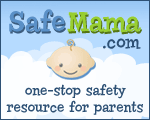 There are a lot of things that we know are better for the environment and for environmental health, but they are hard to do or take a lot of time. Or maybe we're not sure about the alternative products to use to replace the non-healthy, non-environmental ones. Or maybe there is a high cost associated with making the change.
There are a lot of things that we know are better for the environment and for environmental health, but they are hard to do or take a lot of time. Or maybe we're not sure about the alternative products to use to replace the non-healthy, non-environmental ones. Or maybe there is a high cost associated with making the change.Here's something you can do that is pretty straightforward - quit using non-stick cookware. Non-stick pots and pans are coated with polytetrafluoroethylene, or PTFE. The brand name that most people are familiar with is Teflon. The problem with non-stick coatings occur when they are heated (something you're obviously going to do to your pots and pans). The coating breaks down and emits harmful chemicals.
 The question has been, "At what temperature does Teflon and other PTFEs begin to break down?" It depends on whether you ask DuPont (the makers of Teflon), or independent researchers. Now, I am a big believer in scientific research and not jumping to conclusions, but I also tend to abide by the precautionary principle - if something is suspected of causing harm, even if the exact cause and effect is not fully understood, it's best to try and avoid it. Oh, and one other thing that makes me lean toward avoiding non-stick pots and pans? People who own birds cannot cook with non-stick cookware because THEIR BIRDS WILL DIE! Yeah, kind of like the canary in the coal mine, except it's in your kitchen, which I would like to think is much safer than a coal mine.
The question has been, "At what temperature does Teflon and other PTFEs begin to break down?" It depends on whether you ask DuPont (the makers of Teflon), or independent researchers. Now, I am a big believer in scientific research and not jumping to conclusions, but I also tend to abide by the precautionary principle - if something is suspected of causing harm, even if the exact cause and effect is not fully understood, it's best to try and avoid it. Oh, and one other thing that makes me lean toward avoiding non-stick pots and pans? People who own birds cannot cook with non-stick cookware because THEIR BIRDS WILL DIE! Yeah, kind of like the canary in the coal mine, except it's in your kitchen, which I would like to think is much safer than a coal mine.I'd rather have a few things stick to the pan than worry about what toxic fumes my family might be breathing in.
Check out EWG's wealth of information on the toxicity of Teflon.








